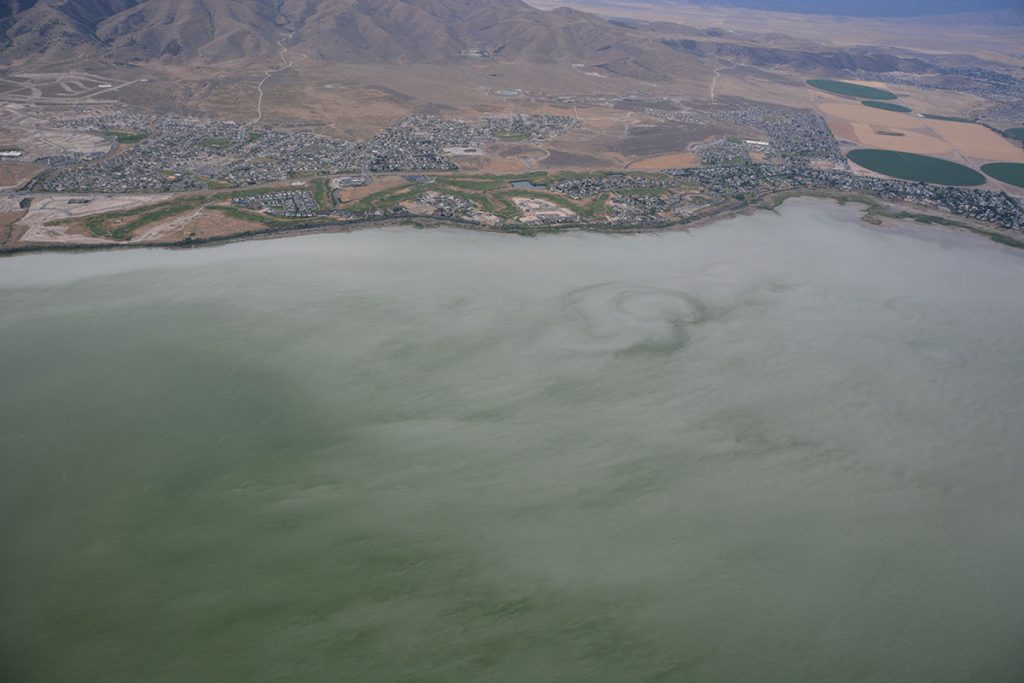
Elevated levels of a harmful algae in the Jordan River and lower Little Cottonwood Creek have prompted state and local agencies to post warning signs and limit access to the Jordan River system. Utah Lake remains closed.
While the bloom appeared to be dissipating on Thursday, aerial and ground surveys conducted over the past few days show the bloom growing in size. A bloom also appears to have formed in the lower Spanish Fork River and Jordan River.
Jordan River Access and Water Use
According to the Salt Lake County Health Department, the Jordan River and its canals, including all canals in the county, are potentially unsafe for people or animals.
The Salt Lake County Health Department, in partnership with affected municipalities, has posted “Warning” signs at all major recreational access points along the Jordan River up to 4500 South. Warning signs alert the public that toxic algae is present and that recreating in or drinking the water is unsafe. In addition, pets and animals should not be allowed in or near the water.
The threshold for recommending that local health departments post warning signs in the Department of Environmental Quality/ Utah Department of Health guidance is 100,000 cells/mL, and sample results from the Jordan River are showing concentrations three to ten times that threshold. Local health departments make final decisions on issuing public health advisories.
Residents who receive secondary water from the Jordan River are advised against using the water for lawns and gardens. Although no official notice has been issued to users of secondary water at this time, some municipalities have already shut off their secondary water sources as a precaution.
Since blooms can last for days or weeks, and toxins can last for up to five days following a bloom, response agencies don’t expect to know for at least a week when water from Utah Lake and the Jordan River can be used again safely.
Potential Health Impact
Calls to the Utah Poison Control Center (UPCC) have decreased after peaking on July 15, 2016. A total of 322 calls have been received so far concerning human and pet health Most individuals experiencing symptoms of cyanobacterial exposure have been treated and released and are recovering. Symptoms of algal bloom exposure include nausea, vomiting, diarrhea, headache, and skin rash.
Again, individuals who believe they may be experiencing symptoms from exposure should contact their physician or the UPCC at (800) 222-1222. Pet owners concerned about their animals should contact their veterinarian.
Wildife Impacts
One of the canal companies reported finding over 100 dead ducks in a canal after clearing a downed tree. While a few dead waterfowl are regularly found on the canal weirs, this is an unusual number, and efforts will be made to collect the carcasses for necropsy (animal autopsy) to determine a cause of death.
No significant fish kills in Utah Lake or the Jordan River have been observed to this point. Anglers are currently advised not to fish, or consume fish from Utah Lake and sections of the Jordan River that feed in or out of the lake. Anyone who has caught fish from those areas in or after July 10, 2016, is advised to not consume their catch.
Learn More
Stay up to date by visiting the Utah Department of Water Quality’s (DEQ) website.
Learn more about the science of algal blooms and what causes them in this article on the DEQ blog.

